reviewed by Truman Perkins
Traditional soil-grown methods will not ever be ways of the past, but alternatives can turn the ordinary garden into something extraordinary. We will look at the difference between hydroponics and aquaponics gardening systems and compare how these two alternative gardening methods work and benefit you!
The home garden is evolving just like other world areas with advancements and improvements in growing techniques. Most people choose a side and are on team hydro or team aqua, but you can do both!
Don't feel like you must pick one way or the other; just let this guide help you to learn enough about both to get started.
As a gardener, you are presented with new opportunities to try different growing fun methods and give your unique triumphs and challenges. Are you up for the challenge of trying something new?
I would tell you to get your shovels ready, but you will not need them for these methods of gardening!
Contents
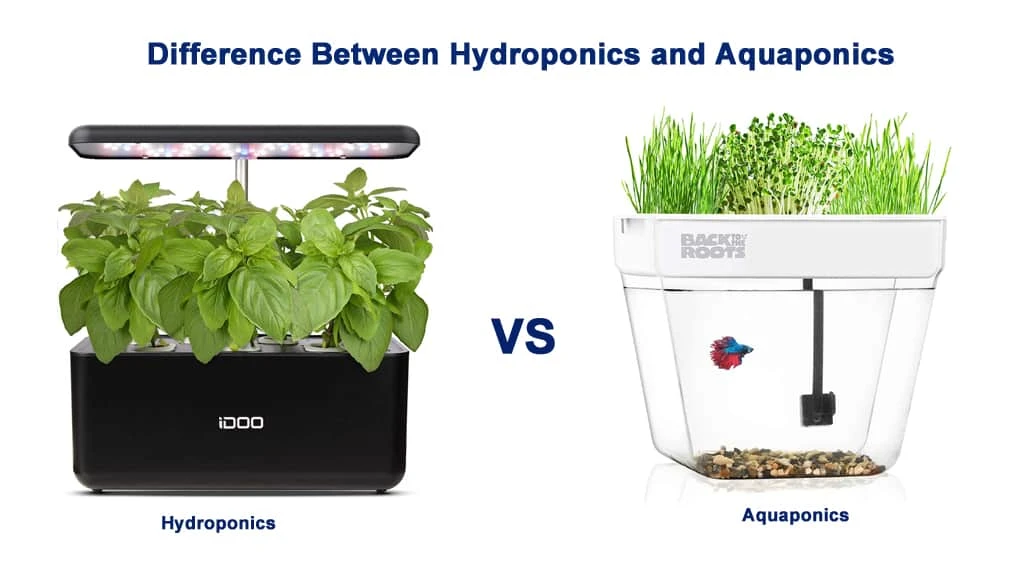
To understand the differences between hydroponics and aquaponics, we must first look at how each system works. The mechanics can have some similarities but also some vast differences as well. Both of these methods are soil-less. Meaning no dirt is used in gardening either way.
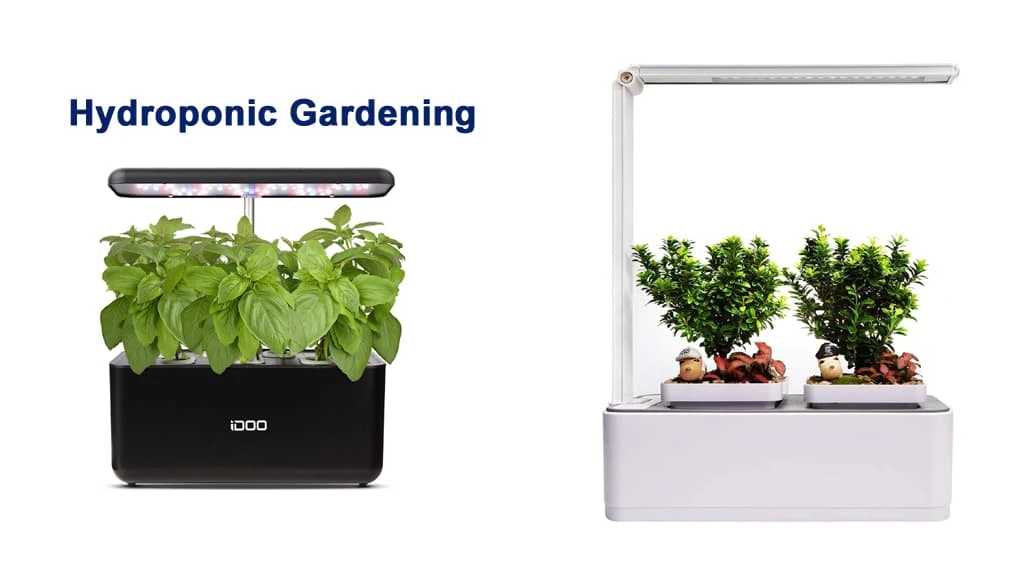
Hydroponic Gardening is a biologically and chemically controlled growing environment that uses no soil for growing plants. That may seem like a rather complex definition for something that is far less complicated than it sounds. Hydroponics is gardening in water.
The water is not simply received from turning on the tap. It is pH balanced and treated with the nutrients required for plant growth. When making sure your soil is appropriately pH-balanced for growing certain plants and fertilizing regularly for change in traditional gardening.
In a hydroponic system, the plant is usually secured in a net cup surrounded by soil-less growing media to hold the plant in place. Growing mediums usually supply nothing but support for the growing plant and consist of rock wool, coarse perlite, vermiculite, coco fibers or coir, gravel, or clay pellets.
The plant is then suspended over the balanced nutrient-rich water in various ways depending on the type of system used. The plant roots can quickly absorb the nutrients required for growth from the water and increase their growth potential over soil-based growing by 25 to 50% on average.
In a previous article, I did a detailed guide regarding Hydroponics. For more specifics on this soil-less growing method, you can find the article here Hydroponics Herb Gardens - Soil-less Growing This article goes deeper into the mechanics behind hydroponics and the different types of systems
The fish matter! If you are just thinking about starting a small indoor system to begin with goldfish would be your best fish option. Beta fish have also been used in a small single plant start-up. Larger systems use larger species like carp, tilapia, koi and even catfish. Saltwater Tanks Can NOT be used to do an aquaponics system.
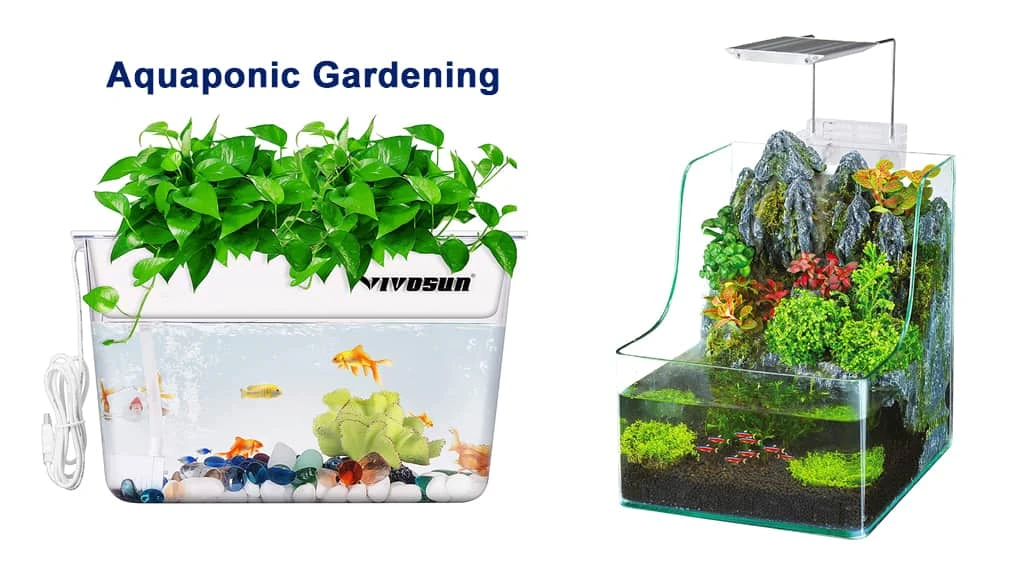
The first thing that pops into my head when I think of aquaponics is the song The Lion King famous. "It's the circle of life"… I will spare you my singing.
This circle that I am referring to in aquaponics is this:
This is a very organic growing method as no chemicals are used, and it is very environmentally friendly. Water is not wasted as the system nourishes and grows plants and cleans and maintains the aquarium.
Aquaponics and hydroponics are similar in how plants are supported and grown over the water; the main differences lie in how the nutrients are supplied within these systems.
Aquaculture is the primary source for sustaining and growing plants in a symbiotic system that benefits both fish and plant species.
This video provides valuable information about Aquaponics and an excellent idea for an easy aquaponics starter kit that would fit into almost any home space.
⇒ You can begin reaping the benefits of this unique aquaponics system featured in this video by following this link AquaSprouts Garden. It is available on Amazon at the lowest price I have found.


You can also see the reviews by those who have purchased and used them by following the link above from the above link.
The AquaSprouts Garden is a self-sustaining aquaponics kit for the home
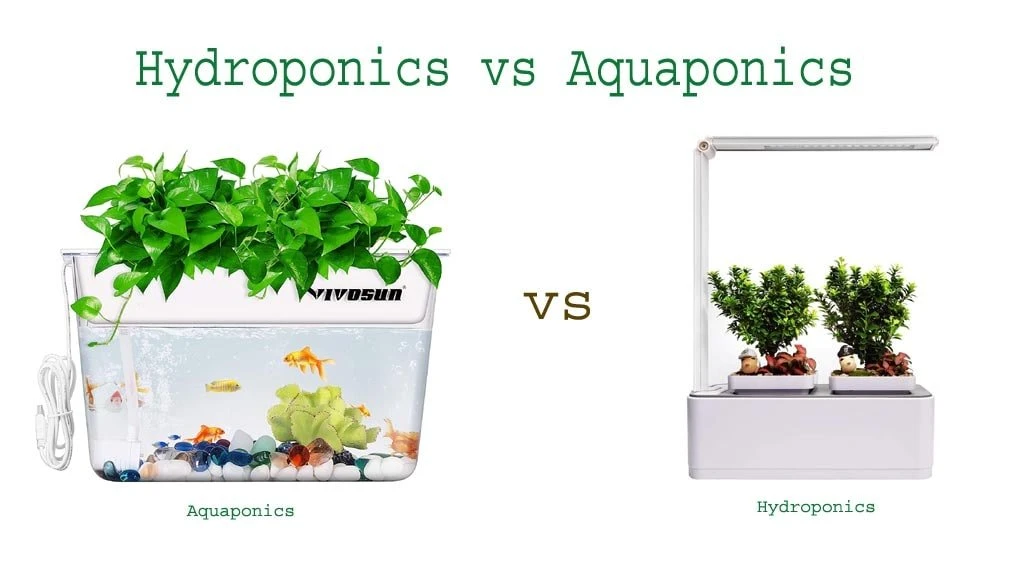
As You can see from the above pros and cons, there are many similar positives and negatives to either system. So which one is better?
I will predict that this battle will rage on for many decades with never a clear decisive winner. Why?
It is like becoming a fan of a sports team. If you are team Hydroponics, there is very little that somebody from team Aquaponics will do to convince you to change your mind. You may find one of these methods better after giving them both a try. You may be one of the few that like them both equally, and that is ok too!
I prefer this is in gardening - Let the plants decide! I have used both methods for growing different types of plants, from herbs, vegetables, and even flowers.
Luckily, I have found some like the controlled environment I can give them by carefully monitoring nutrients through hydroponically growing. One such champion for me has been tomatoes. I have had far greater success with my tomato plants and their harvest through hydroponics. The fruits seem to be larger, and the growth is more consistent, and they produce better.
In the opposite corner, microgreens and kale have been clear victors in aquaponics. The microgreens growing for shorter times and produce quickly and evenly. I also find they do well at filtering the water that returns to the tanks as well. Kale can get a little large for my small aquaponics, but the leaves seem thicker and more flavorful when grown aquaponically.
There is one misconception I would like to address about hydroponics. That is organic growth. Most hydroponic nutrients sold on the market are not for the organic gardener, but ORGANIC methods can grow hydroponically. Choosing to grow hydroponics organically adds a bit more work, but it is possible and is just as effective as non-organic chemicals. Like the grocery stores, however, organic hydroponic nutrients tend to be a little more pricey and something to consider when thinking about the overhead cost of this gardening method.
If you are looking to get the most out of your aquaponics growing, you will need to consider the fish and feed them. The food does indeed matter. To get the best return on your waste and a healthy viable tank, your fish should have a balanced diet of food that includes proteins, fats, and carbohydrates. Purchasing flake or pellet food is okay; check that it is ideal for your fish type and use in aquaponics.
A clear advantage in aquaponics is that after an initial set up phase the system will continue to work without adjustments for continued gardening of new plants. In hydroponics, you need to adjust the chemical each time new plants are started in the system to meet the phase of growth your plant is on. Seedlings require different nutrient levels versus the nutrients required in the vegetative or flowing states when grown hydroponically.
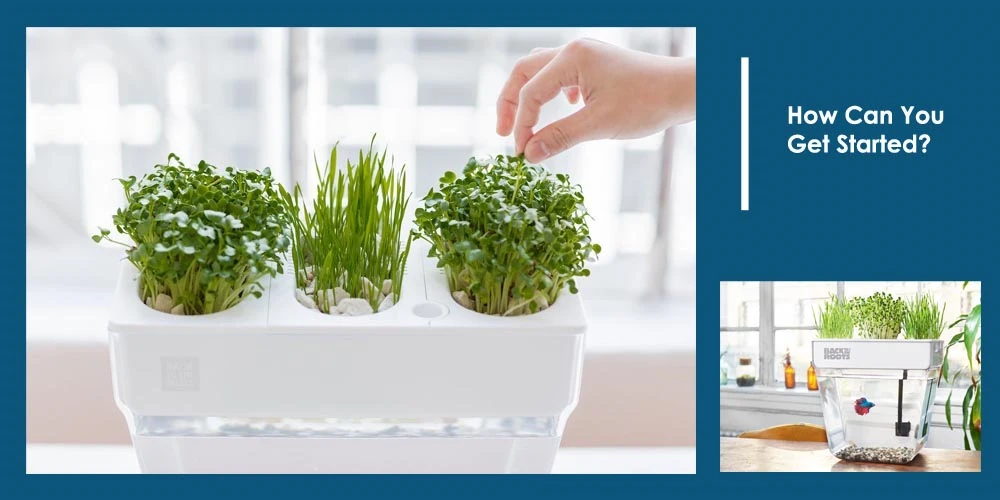
Getting started with either method of hydroponics or aquaponics can be a bit challenging. There are many types of systems available that range significantly in price and size. If you are starting with alternative growing techniques, there are some critical questions that you need to ask yourself before investing.
This is a lot of information to digest all at once. There is no right and wrong option for everyone; it is a choice. I enjoy hydroponic gardening because I find it more accessible, and I have one small aquaponic system. My preference is hydroponics, but it may not be the same for you.
Create a budget of how much you are ready to invest in this new growing method. Hydroponics can be a little cheaper initially, while aquaponics may be more upfront but less long-term. The size of the system also dramatically impacts the cost when shopping for a plan. Check to see what is included with your investment.
Will you need to purchase additional equipment that will add to the overhead setup cost? Will it be compatible with your current electrical supply or structural supports at home, or will physical structure alterations need to take place? This usually only applies to extensive systems, but you do not want to be surprised by a significant investment in a growing approach to find that you will have to make costly accommodations to make it work in your home or greenhouse.
Both types of systems come in various sizes, so matching them to your space should be the easiest part of buying. You could choose a massive full room size system giant to a small countertop, perfect for the kitchen. How it fits into your home and the available space you have for growth will help you choose.
Other factors to consider in space are access to electricity, light, either natural or in the form of grow lights, heated or unheated areas, waterproofing, and pets that could get into water reservoirs.
As previously discussed in cost, some systems come pre-built with everything you need, including lights, as others do not. If you do not have enough natural sunlight, you may need to consider the additional growth lights. Your plants in either system will require their independent lighting to grow. Just because your aquarium has a light does not mean it will supply light to your plants; they will need additional lighting.
I have previously posted a couple articles on this site that give you more information and options regarding grow lights. The Best Grow Lights for Indoor Plants and Herbs and Best LED Grow Lights
Jumpstart into Hydroponics or Aquaponics growing now with simple premade starter kits. These recommended starter systems will make it easy to start whatever method you choose. Click on any link below to learn more!
Most Fruits, Vegetables, Flowers & Herbs Love Hydroponics & Aquaponics!
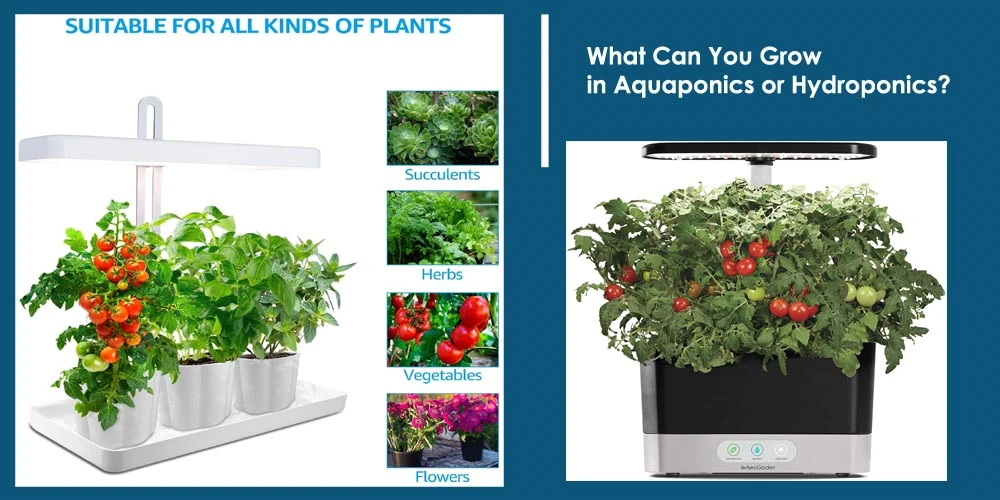
You will not find any limits when it comes to growing in either method. Usually, the only limitations I have ever seen have come from indoor space confinements. It isn't easy to develop an 8ft tall tomato plant on the countertop.
Other plants and vegetables that can be challenging are root or tuber forming types like potatoes, carrots, beets, ginger, turmeric, yams, and similar. Although none of these are impossible, they are far more complex and require larger growing space for the rootstocks to grow. Mushrooms and other fungus types are a big NO-NO. This will infect the water, and fungus is the last thing you want spreading in either system.
Anything green loves hydroponics or aquaponics. Herbs and green vegetables like lettuces, kale, and similar thrive and grow in leaps and bounds with these methods. I typically grow a continuous supply of lettuce types for salads all year, and they go from seed to harvest on average in 6 weeks.
Fruits, vegetables, and flowers of all other types will grow very well in these systems. You can mix them up and change them out frequently. Try different things to see what you enjoy producing the most. Cannabis is also a common herb grown in either method but more often hydroponically to control nutrient levels strictly.
Maybe you are using both. Did you find a difference between hydroponics and aquaponics gardening systems that I missed here? I would love to hear about your experiences! Leave a comment below and start a conversation.
As always, if you have any questions or you need any help, drop a comment below or reach out to me on the site contact form. I am happy to help!
Happy Gardening!
 |
 |
 |
 |

About Truman Perkins
Truman Perkins is a Detroit-based SEO consultant who's been in the business for over a decade. He got his start helping friends and clients get their websites off the ground, and he continues to do so today. In his free time, Truman enjoys learning and writing about gardening - something he believes is a natural stress reliever. He lives with his wife, Jenny, and their twins in Detroit.
 |
 |
 |
 |
Get new FREE Gifts. Or latest free growing e-books from our latest works.
Disable Ad block to reveal all the links. Once done, hit a button below
 |
 |
 |
 |